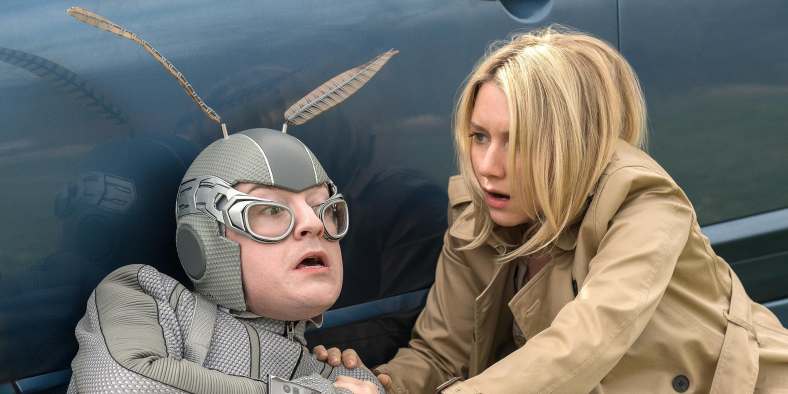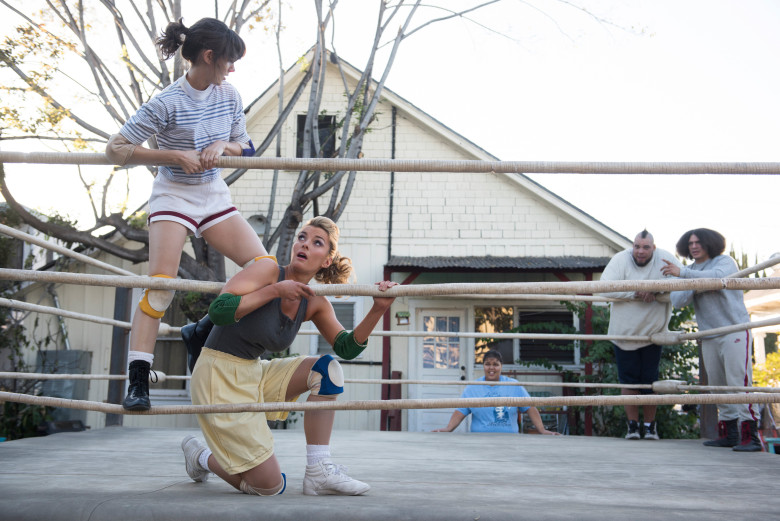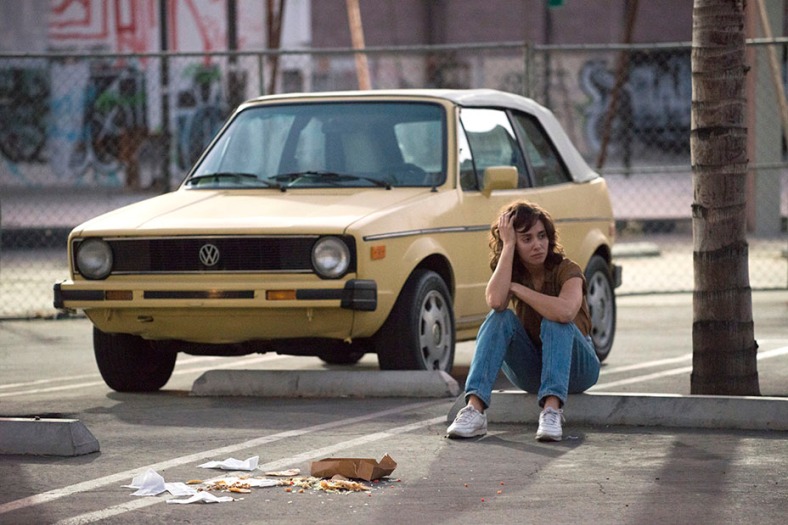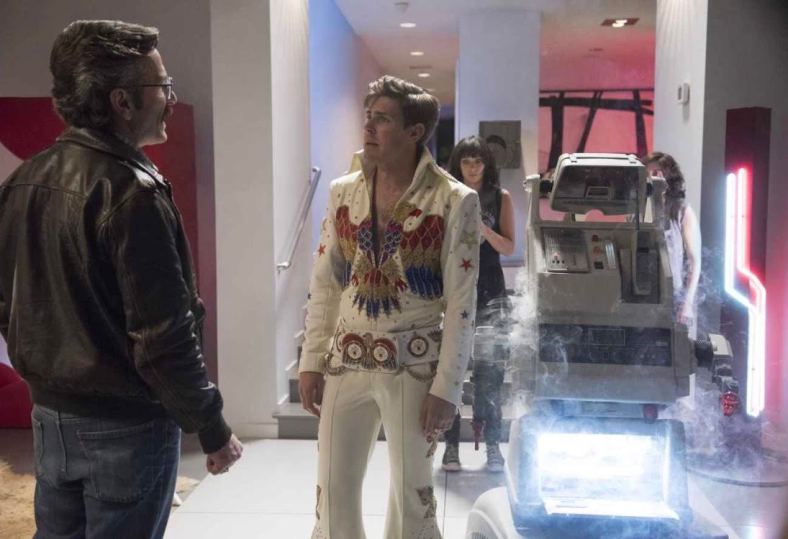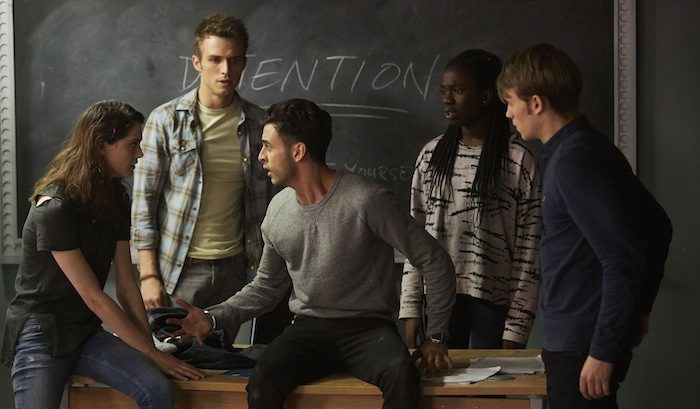Back in the day (well, 2011), I wrote about an emerging TV writer called Cheo Hodari Coker, who was working on the greatest cop show of all time (SouthLAnd, fool), in a blog with the title Coker Plays The Blues. Coker went on to write some of SouthLAnd‘s greatest episodes, as well as work on Almost Human, NCIS: LA and Ray Donovan.
But now he’s stepped up to create and run a show that’s been dominating social media for most of the summer, without even being released. So when Netflix dropped the most buzzed about show in its history at the end of September, expectations were sky high.
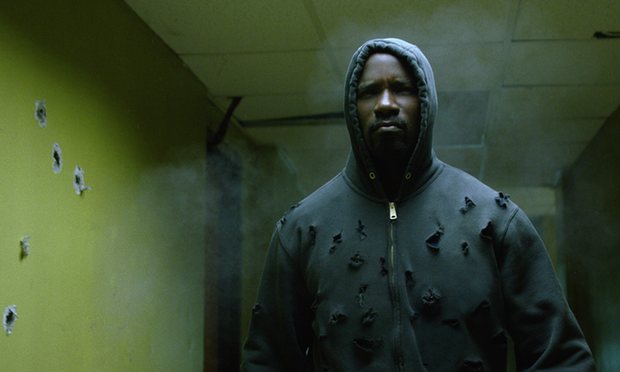
2016 is an especially charged year for a show about a bulletproof black man, a fact not lost on Coker. So he did the only right thing, the thing he’d been intending to do all along: he leaned into that, hard. Luke Cage dives deep into the African American experience: it’s the show’s beating heart, the blood in its veins, its soul, and its purpose. And in that respect, the show couldn’t be any better.
The show’s foregrounding of what it means to be black in America is so long overdue in TV (or on any size screen) it’s ridiculous: how has it taken this long? (Yes, I know why: institutional bias, AKA, racism). Luke Cage is what TV (and America, and the world) needs now more than ever. Coker cast people of color in every level of role (which, shamefully for society and pop culture, was a revolutionary act in itself) and hit hard with his signature dropping of references in the scripts, which means the show is stacked deep with truly excellent actors and performances, namechecks everything from Chester Hines to A$AP Rocky… and then there’s that soundtrack… damn, that soundtrack is sweet. Adrian Younge and Ali Shaheed Muhammad bring the funk with a gritty, slinky, soulful Wu-Tang meets Shaft vibe that gives the show a whole extra dimension of cool.
It has been called the Wu-Tangification of Marvel (by Coker), but on watching the show, you realize that that’s not strictly true… it’s more classic and less agitated than that. It’s more like the 70s Isaac Hayes-ification of Marvel, which is still intensely, deeply cool, but not quite as savage and frenetic as the Staten Island collective. The reason for that is the pace of the show. When Jessica Jones (which gave us our first look at Cage) dropped, some people complained about its novelistic pacing, and how not every episode stood alone in terms of stuff happening specific to each episode. Personally, I dug the hell out of it, but here’s the thing: Luke Cage is paced much more slowly than JJ.
It’s beautifully made, but it’s also an extremely deliberate, measured, slow burn, which is why it’s more Motown than RZA. It’s personal preference as to what you make of that. For this reviewer, it did feel early on as though all the bandwidth was being taken up with some very long conversations. The conversations were, of course, important texturally, and in themselves, they’re joyously great (that opening scene was beautifully played out); but you can’t help wondering if there could have been a way to combine the texture with the action, instead of separating them out. The show makes texture, subtext, theme and action all one thing later on to brilliant effect (e.g. the dashcam video, Misty explaining why an innocent black man would be on the run from cops who think he’s guilty and are armed with special bullets), which makes you long for some of that at the start.
Those early conversations are about books, meditations on the nature of power and society, and what it means to be a man. Those are all powerful things to fill a show with, but this is a genre show that’s part of the Marvel universe. For the first half of the season, it didn’t necessarily feel that way: it lacked fire and, literally, punch.
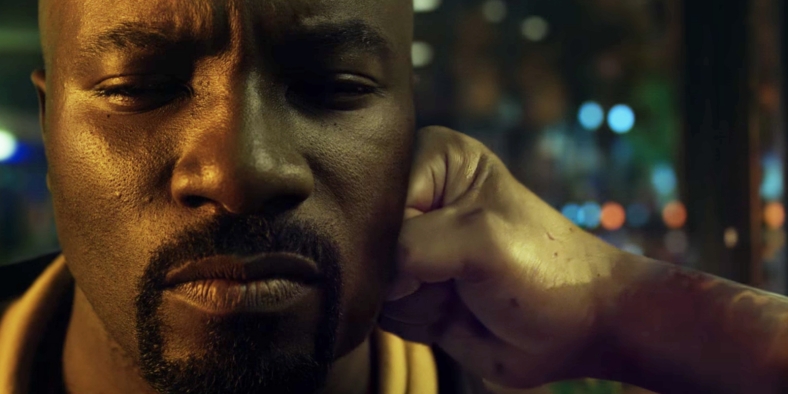
OK, there’s some punching…
Luke Cage is, especially early on, a somewhat passive and reactive character. The premise for the show is that he’s hiding out in Harlem, trying to be invisible (I’m not sure we needed the lingering shot of Cage staring at the cover of Ralph Ellison’s Invisible Man, but…). That’s a low key place to start, but necessary for Cage’s arc from hideaway to hero. Thirteen hours is a long time for that type of arc to play out, though. That means the show takes some serious time working through those beats. The pattern for the first few episodes is a lot of talking, and maybe a minute or less of action at the end. You need to get on board with the slowed down rhythm. The lack of fire and tension is compounded too by some head-on framing (perfectly composed and very still wide master shots are a trademark of Sherlock director Paul McGuigan, who directed the first two episodes and set the tone), scenes that are very, very cool but run long (e.g. Cottonmouth walking very slowly towards his picture window to get the perfect framing of the Biggie picture’s crown on his head), and editing that lingers slightly too long on some moments, all of which contribute to letting the air out of a lot of scenes.
Don’t get me wrong: there’s a certain glee to moments in the first three eps. Luke beating down Cottonmouth’s thugs at the end of the first, Luke’s iconic attack on the Crispus Attucks building to the sounds of Bring Da Ruckus in three (which, although it lacks some visual clarity, is still damn cool), to the closing seconds of that episode, when Cottonmouth shoots a f**cking rocket at Luke—it’s undeniably a kickass moment—which kicks us into ep 4, which is full of flashbacks. That ep takes its time, but lets us know exactly what happened to Luke to make him bulletproof, which justifies the speed of the revelation.
The transitional episode is probably the fifth, “Just To Get A Rep.” This features some of the most clumsy and purely functional dialogue to date in the show, and it has scenes thrown together that don’t really flow, creating a jarring effect. But it’s the ep’s epic non-dialogue scenes that tilt the show towards its remaining (and generally much more successful) episodes. Firstly, Jidenna singing Long Live The Chief in the club is f**king HUGE. It hits HARD. Goddamn, I loved that. Suddenly, the club and its music IGNITE in terms of storytelling. Chills, baby. Secondly, and, sorry, even more awesomely, is the reappearance of Claire Temple, played by the legendary, extraordinary, miraculous Rosario Dawson. While everyone on the show is phenomenal (more on that later, but gotta shoutout Simone Missick right here), it’s Dawson that brings the fire to Luke Cage. She’s walking through Harlem, some punk steals her bag… so she runs him down and beats the shit out of him. Perfect. Welcome back, Claire.

And just to point out, those two were actually ONE SEQUENCE. Hats off. Jidenna in the club interweaves with Claire beating down her attacker. It’s how the ep starts and it’s JUST. SO. GOOD. You’re on your feet yelling at the TV because this is exactly what TV should be.
From here on, the fire set in episode five begins to burn more steadily. There are some bumps along the way—the pacing is still uneven, the dialogue can be stilted in places, and the reveal of Diamondback lacked clarity, which detracted from the impact of his appearance (the very low-key, very low-impact handling of shooting Luke with the second Judas bullet didn’t help)—and there’s another significant dip in episode 10, “Take It Personal”, which has much less effective dialogue than ep 5, and in terms of outline and execution, is often confusing and bemusing (so much is made earlier of how catastrophic it would be for Luke to get shot with a second Judas bullet, but ep 10 forgets that second bullet is even there — Claire only takes out one set of fragments. That’s severely jarring, and takes you out of the story.).
But, on the heels of that, we get “Now You’re Mine,” the eleventh and absolutely the best episode by far. Shout out to the writer, Christian Taylor, and the director, George Tillman Jr. It’s amazing. It’s like the show needed to follow Diamondback’s advice in the early moments of the ep: “Later for that pre-written shit… sometimes you gotta freestyle.” Hell to the yes. The dialogue sings sweetly, characters spit wisdom and fire, the storytelling is tense, fraught, suspenseful, the directing is ferocious, and the whole thing is just fantastically and gleefully dark and intense. It also features one of Claire and Misty’s finest moments as they beat down Shades and help each other try to escape the club. Magnificent, towering performances from Dawson and Missick make this some of the best TV of 2016. This is what the show needed to be. Not in the sense that it had to come out of the gate at an 11, but there needed to be signs that this was coming; that this could happen in this world.

Episode 12, “Soliloquy Of Chaos” (we have to give Coker kudos for naming every episode after a Gang Starr track, because it works perfectly), continues to bring the fire. Which EXPLODES in the finest final moments of any ep in the show: the always brilliant Ron Cephas Jones finally—FINALLY—gets a bunch of lines worth a damn and absolutely kills with them (“What the hell what type of Jean-Paul Gaultier shit is this? What are you, a pimp stormtrooper?” GREATEST LINES ON TV IN 2016), and the show plunges head-on into full genre insanity, when Misty speaks for all of us and says, “kick his ass, Luke.” Diamondback, tricked out in his pimp stormtrooper high-tech-as-shit outfit, and Luke finally rush each other… and we cut to black. Genius. Everything about this episode works so perfectly it hurts.

The final episode drops us right into the fight we’ve been waiting for, and it’s refreshing, and appropriate, that it’s more of a drag-out, knock-down Rocky style brawl in the street. It does kind of just, end, though — and the hints of sci-fi that have been given during it (lingering shots of the power unit on Diamondback’s… back… powering up and down) are not really capitalized upon. And, the fight is at the opening of the episode, which doesn’t leave the rest of the hour with too many places to go. The sudden end to the fight, and the story’s subsequent adrenaline crash, take us back to a slower pace, which foregrounds the key concern of the show: Luke’s lack of agency. Although there are a few key moments when he takes control, for the majority of the thirteen episodes, things happen to him, and he reacts. Which could have worked, except the finale to the show is Luke, in one sense, giving up, reacting one last time and allowing circumstances to dictate his path in life. You can, clearly, read his final decision as noble, and can see some justification for it in his general world-weariness. But it’s an oddly low-key, anticlimactic end. That said, the very final shot, applause over the New York skyline, is pretty goddamned amazing and thrilling.
But Luke isn’t in that shot, and that reminds us that in this show, some of the things that are the most awesome don’t involve Luke at all.

Including, and especially, the other characters. Theo Rossi threatens to steal the show as Shades. Simone Missick gives Misty such a wonderful, wounded intensity. Erik LaRay Harvey tears up Diamondback’s dialogue and spits it in finely deranged fashion. Alfre Woodard truly delivers Mariah’s tipping between powerful and powerless. Mahershala Ali is positively and ferociously Shakespearean as Cottonmouth. Ron Cephas Jones needed more lines because he could say anything and make it sound kick-ass. Rosario Dawson… shit, why doesn’t she have her own Netflix Marvel show at this point? Expose Claire to some experimental rays or serums or some shit and give her powers and let her tear it up! (One of the show’s coolest moments is Claire’s final shot, where she tears off the number for the self defense classes… she’s so gonna own Iron Fist).
But we can’t forget the main man, the power man. Mike Colter. He really brings the brooding, haunted, conflicted Cage to vivid life. Despite the fact the Luke has a habit of being pushed to the back of the action, Colter mesmerizes in every shot, and makes it his own. One of the best cast Marvel heroes of all, no doubt.
So this is where we end up: there is so much to love with Luke Cage. It’s an important show, an essential show, frequently beautiful to look at and experience, and it does many, many things really f**king well. But in the interest of brutal truth: it is uneven (you can clearly feel the different writers on the show), there are pacing and dialogue issues, and its hero often seems detached from the action (in some cases literally off-screen for major stretches of time). Coker is absolutely one of the finest TV writers we have, and has curated a supremely bad-ass and massively, poignantly relevant piece of iconic pop culture with Luke Cage. For what it’s worth, I hope he uses those final few episodes as the template for season 2. This show is too good, and too important, for anything less.

